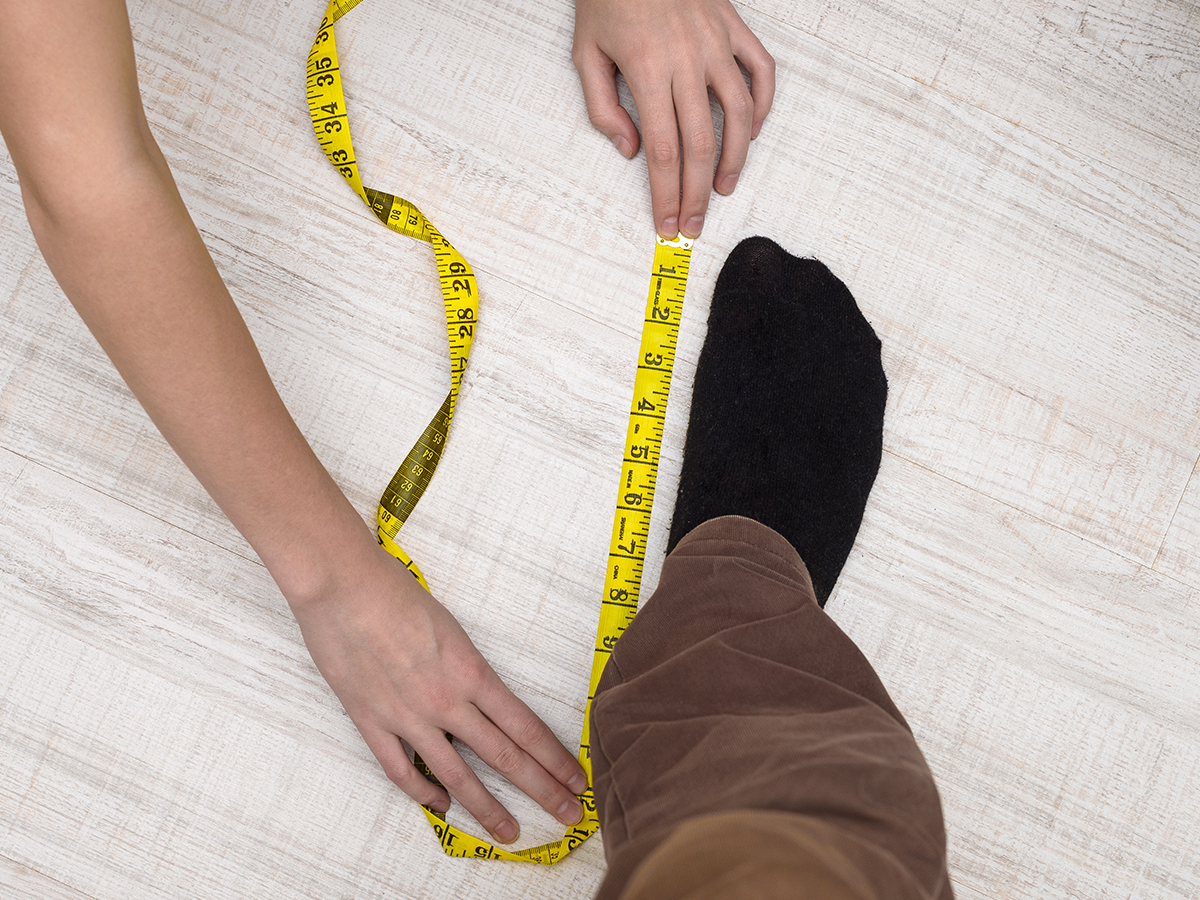

So you’ve had the same shoe size your entire adult life, but your shoes are now feeling tight, and you find yourself going up a shoe size. What’s going on? Could your feet have started to grow again as an adult? Today, our podiatrists share why your feet may be changing size and what you can do to help.
Can Feet Start Growing Again As An Adult?
No, biologically your feet can’t start growing again. The way your bones grow is through areas called growth plates that all young growing bones have within them. Growth plates are made of cartilage and are where your body adds new bone, lengthening your bones. When you reach maturity, these growth plates harden and turn into solid bone. Your bones can no longer lengthen, and you stop growing. Once growth plates harden, they cannot re-form.
Your Feet Can Change Size As An Adult
Even though your feet can’t grow as an adult, they can still change size. Most often, your feet will grow wider, flatter or longer because the ligaments and tissues that hold the position of your feet naturally increase their laxity (stretchiness) over time. Aside from the natural changes that come with ageing, our feet may get bigger from:
Pregnancy
Pregnancy causes the Relaxin hormone to freely circulate through the body. It is designed to help loosen our ligaments to prepare our hips and pelvis for the changes associated with pregnancy and childbirth. It also acts on the rest of our ligaments, including those in our feet. As the ligaments increase in laxity, our feet grow flatter and broader, especially with the added weight of a growing baby.
Weight
We rely on our feet to support our entire body weight, step after step. If our weight increases, more force acts on our feet, and our ligaments have to work even harder. Additionally, when we gain weight, it can also be added to our feet, causing them to appear bigger.
Swelling
When our feet and ankles are swollen, we may need shoes that are one or two sizes larger to help keep us comfortable and out of pain. Foot swelling can have a range of causes, from pregnancy to problems with veins and lymphatic flow, to medical conditions and air travel.
Structural Foot Changes
Our feet are intricate, complex structures containing 26 bones and 33 joints. Decades of physical activity, shoe wear, injuries, medical conditions and the unique functioning of our feet can lead to a range of structural changes that increase our shoe size. Common examples we see are bunions, arthritic changes to the joints, and hammertoes or claw toes, which increase your need for a bigger shoe with a larger toe box.
What Can I Do To Help My Feet?
As your feet widen and flatten, the strain on your muscles, tendons and ligaments increases too. Your feet will have to work harder to take the same steps and stay free of pain or injury. The best thing you can do is support your feet as much as possible, reducing the strain and pressure on the tissues.
The easiest way to do this is by using good, supportive shoes with a custom foot orthotic inside them.This will help relieve the aches associated with overworking your feet all day, help prevent injuries to the muscles and tendons of your feet, and may slow down the rate at which your feet increase in size. Depending on why your feet have increased in size, your orthotics may let you keep wearing the same shoes without having to buy the next size up, too.
It’s important to have your orthotics made from scans and measurements of your feet, to ensure they do the best job of supporting your feet and promoting your foot health. When you need to get new shoes, make sure to have them fitted by a professional. It’s not just the length that’s important, but the width and depth of the shoe, the size of the toe box, and the stability and support that the shoe provides.
My FootDr Helps Keep You Comfortable On Your Feet
Our podiatrists are experts in foot health and injury prevention, and work with thousands of Australians every year to help them stay comfortable on their feet now, and prepare them for long-term foot health for the decades to come. We have the technology to create our own custom orthotics to perfectly match your feet, based on an assessment and prescription from your podiatrist. Many of our clinics also stock a range of comfortable, supportive and podiatrist-approved footwear, with our team ready to help you choose the best styles for your feet.


